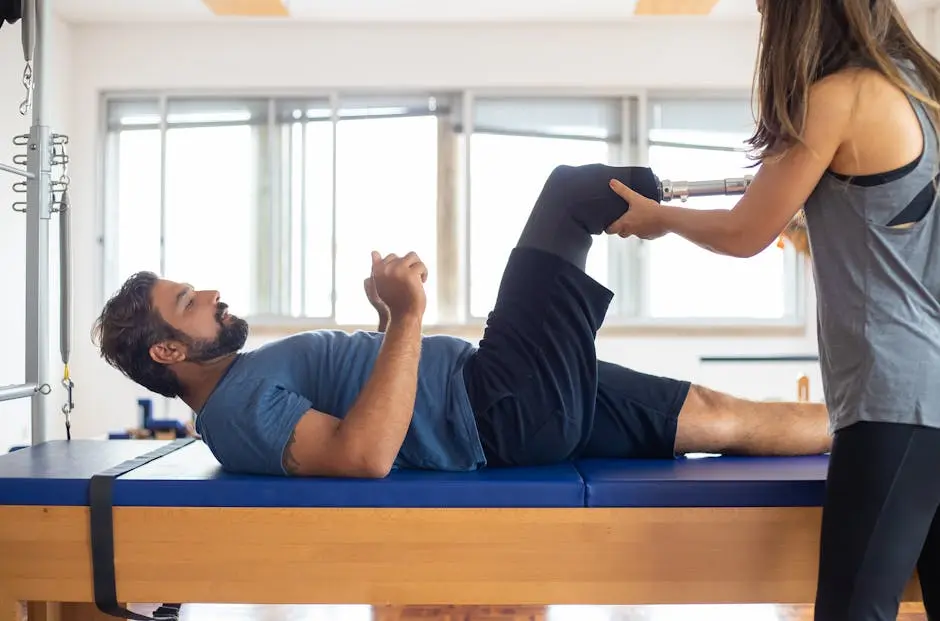How Does Medical Rehab Equipment Aid Different Types of Therapies?
Medical rehab equipment plays a crucial role in facilitating various therapies that aid in recovery and rehabilitation. In this blog, we will explore how different types of equipment can enhance the effectiveness of therapies, ensuring patients receive the best possible care and support in their healing journeys.
Understanding Medical Rehab Equipment
Medical rehab equipment encompasses a wide range of tools designed specifically to assist patients on their journey to recovery. From humble beginnings with basic supports to sophisticated machinery, this equipment is tailored to meet diverse therapeutic needs.
It’s essential to recognize that not all equipment serves the same purpose. Each piece of medical rehab gear is engineered to aid different aspects of therapy, enhancing the recovery process. By understanding this variety, patients and caregivers can make informed choices about which tools are best suited to their unique situations.
As technology evolves, medical rehab equipment continues to improve, offering fresh solutions to longstanding challenges. This constant innovation provides a pivotal role in shaping effective therapeutic practices.
Equipment for Physical Therapy
Physical therapy often involves regaining strength and mobility, and this is where specialized equipment plays a central role. Equipment like resistance bands, stability balls, and treadmills significantly aids patients in relearning movement patterns.
For instance, treadmills equipped with harness systems allow patients to practice walking safely, encouraging confidence as they work on their gait. This technology not only supports physical recovery but also motivates patients by tracking their progress.
In addition to treadmills, resistance bands provide a versatile way to strengthen muscles. Their adjustable force allows patients to gradually increase resistance levels, making it perfect for personalized recovery regimes.
All in all, the right physical therapy equipment can make a significant difference, moving patients closer to their rehabilitation goals while fostering a sense of accomplishment.
Tools for Occupational Therapy
Occupational therapy emphasizes improving daily living skills and enhancing quality of life. Specialized tools such as adapted utensils, therapy putty, and sensory integration equipment are designed to address each individual’s unique challenges.
For example, adaptive kitchen tools allow individuals with limited motor skills to perform cooking tasks independently. Simple modifications to common kitchen gadgets can empower patients, making everyday activities feel more achievable.
Additionally, therapy putty helps improve hand strength and coordination, gradually making tasks easier. By engaging in meaningful activities, patients can regain confidence while enhancing their functional independence.
Ultimately, the right occupational therapy tools are vital in breaking down barriers for individuals seeking to reclaim their daily routines. These items not only facilitate rehabilitation but also enhance self-esteem and motivation.
Supportive Devices in Speech Therapy
Communication is a fundamental aspect of human interaction, and supportive devices play a crucial role in rehabilitation. In speech therapy, devices such as augmentative and alternative communication (AAC) tools can dramatically change a patient’s ability to express themselves.
These devices provide an alternative means for those who might struggle with traditional speech. By utilizing symbols, pictures, or text-to-speech technology, individuals can effectively communicate their thoughts and needs, bridging the gap created by speech impairments.
Moreover, apps designed to enhance speech skills allow patients to practice their pronunciation and language comprehension in an engaging, user-friendly manner. This interactive approach motivates patients to participate actively in their therapy sessions, fostering a sense of achievement.
Integrating Technology in Rehab
In today’s world, technology integration into medical rehab is transforming the way therapists and patients approach recovery. Cutting-edge advancements like virtual reality (VR) not only make rehab engaging but also provide critical, tailored experiences.
For instance, VR can simulate real-life scenarios that patients might find challenging. Practicing skills in a controlled yet realistic environment enhances their learning experience while building confidence in tackling those challenges outside of therapy.
Furthermore, mobile apps and wearable devices track progress and offer personalized feedback. Patients can monitor their performance and adjust their commitments. This data-driven approach empowers users to take control of their recovery journey, making therapy an active experience.
Benefits of Customized Rehab Solutions
One-size-fits-all solutions are seldom effective in the realm of medical rehab. Tailoring equipment and strategies to fit individual needs not only accelerates recovery but also engenders a sense of ownership in the rehabilitation process.
Each patient’s therapy journey is unique, and customized solutions help ensure that they are equipped with the most suitable tools for their specific challenges. This personalized approach improves not only the efficiency of interventions but also enhances overall patient satisfaction.
Moreover, when patients feel that their rehab strategies are personally tailored, they are more likely to engage proactively in their recovery process. By waning frustration and boosting motivation, customized equipment significantly contributes to achieving successful outcomes over time.
Final Thoughts on Medical Rehab Equipment’s Impact
Understanding the diverse applications of medical rehab equipment empowers both therapists and patients to utilize resources effectively. With the right tools, recovery becomes more achievable and efficient, paving the way for improved health and wellness.




